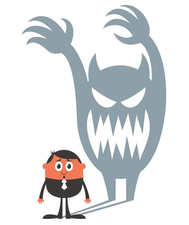Image processing with Go
Programming Snapshot – Go

© Lead Image © Martin Malchev, 123RF.com
Go comes with an image-processing toolkit right out of the box. In this month's column, Mike Schilli explains how to walk through a photo's pixels to detect the foreground by comparing values against a threshold and shows how to manipulate the original by creating a nice looking silhouette.
Until recently, my headshot at the end of every "Programming Snapshot" article showed a much younger version of myself, dating back 15 years, so I grudgingly shot a new one the other day. While doing this, the idea occurred to me to try out my new favorite language Go's suitability for image processing. How hard could it be to generate an artful silhouette of the person shown in the photo?
Of course, with some Gimp skills this could be done quite quickly. However, what is far more interesting is the question of how an image processing program walks through the pixels of Figure 1 and finds out which of them actually belong to the person (the foreground) and which to the lighter background. When a foreground pixel is found, the algorithm can then go ahead and set it to black, which in the digital world means it has its red, green, and blue channels set to 0,0,0. Easy enough, right?

[...]
Buy this article as PDF
(incl. VAT)
Buy Linux Magazine
Subscribe to our Linux Newsletters
Find Linux and Open Source Jobs
Subscribe to our ADMIN Newsletters
Support Our Work
Linux Magazine content is made possible with support from readers like you. Please consider contributing when you’ve found an article to be beneficial.

News
-
Fedora 43 Has Finally Landed
The Fedora Linux developers have announced their latest release, Fedora 43.
-
KDE Unleashes Plasma 6.5
The Plasma 6.5 desktop environment is now available with new features, improvements, and the usual bug fixes.
-
Xubuntu Site Possibly Hacked
It appears that the Xubuntu site was hacked and briefly served up a malicious ZIP file from its download page.
-
LMDE 7 Now Available
Linux Mint Debian Edition, version 7, has been officially released and is based on upstream Debian.
-
Linux Kernel 6.16 Reaches EOL
Linux kernel 6.16 has reached its end of life, which means you'll need to upgrade to the next stable release, Linux kernel 6.17.
-
Amazon Ditches Android for a Linux-Based OS
Amazon has migrated from Android to the Linux-based Vega OS for its Fire TV.
-
Cairo Dock 3.6 Now Available for More Compositors
If you're a fan of third-party desktop docks, then the latest release of Cairo Dock with Wayland support is for you.
-
System76 Unleashes Pop!_OS 24.04 Beta
System76's first beta of Pop!_OS 24.04 is an impressive feat.
-
Linux Kernel 6.17 is Available
Linus Torvalds has announced that the latest kernel has been released with plenty of core improvements and even more hardware support.
-
Kali Linux 2025.3 Released with New Hacking Tools
If you're a Kali Linux fan, you'll be glad to know that the third release of this famous pen-testing distribution is now available with updates for key components.

